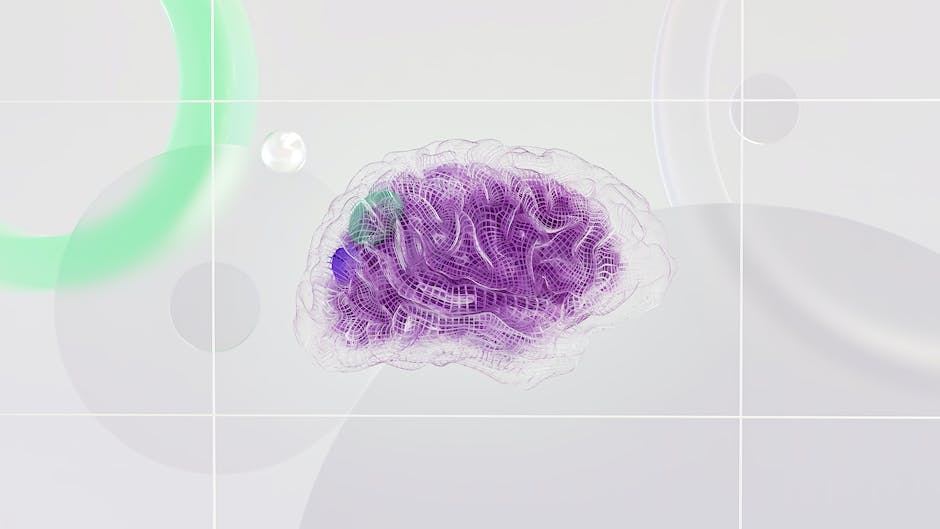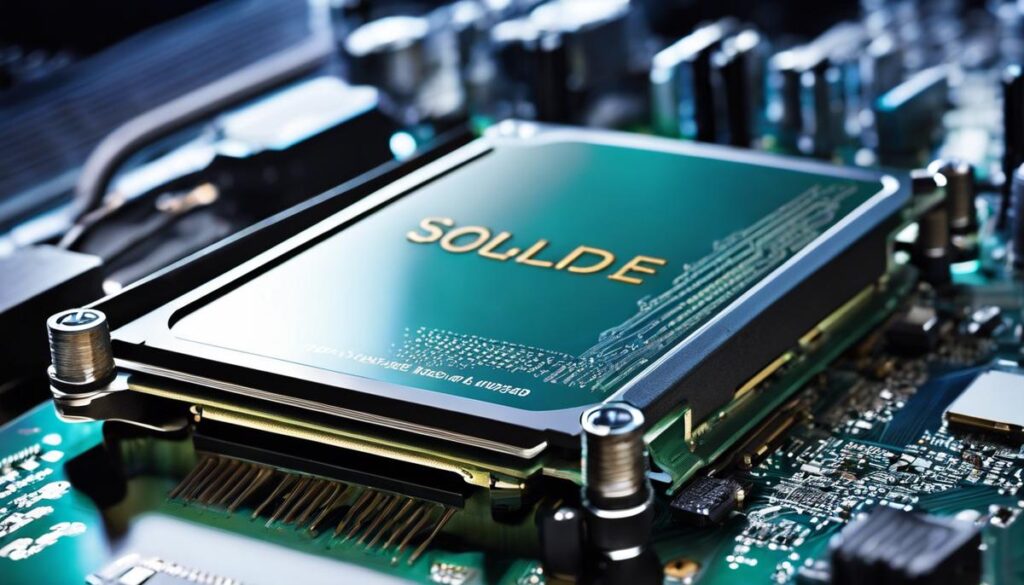Emerging in a powerfully dynamic world of technology, Solid-State Drives (SSDs) have made significant strides, leaving a profound imprint on how we process and store data. By delivering quicker, more efficient data access, and ensuring longer lifespan, SSDs have become a cornerstone of change, greatly surpassing their traditional hard disk counterparts. This essay presents a comprehensive exploration into SSDs, detailing their basics, the manifold benefits over conventional drives, critical challenges, as well as the riveting future prospects. We will dissect the anatomy of these storage marvels and delve into the factors shaping their increasing relevance and popularity in contemporary times.
The Basics of Solid-State Drives
Diving right in, the beauty of solid-state drives, or SSDs as they are commonly termed, lies in their superior efficiency and how they revolutionize traditional storage conventions. Unlike the classic, mechanical hard disk drives (HDDs) that use magnetic storage devices with moving parts, SSDs take a different path – they utilize NAND-based flash memory. In simple terms, SSDs are akin to oversized, more sophisticated flash drives. No moving parts mean less vulnerability to physical shock, silence in operation, quicker access time and lower latency.
The design of SSDs makes it possible to retrieve stored data almost instantaneously. It’s significant to note that on mechanical drives, the time the system spends in finding the required data is profoundly cut down because SSDs don’t need to physically ‘search’ different parts of the drive. Consequently, when it comes to data-intensive tasks, SSDs are a more preferred choice as they drastically reduce the load and access times, resulting in a seamless, hassle-free user experience. Additionally, SSDs, having no mechanical elements, have much greater durability and consume less power, making them a smart choice for the environment, as well as for your energy bills.
To wrap up, SSDs have an edge in speed, durability, energy efficiency, and overall user experience, heralding a unique and efficient future for data storage systems. While the price per gigabyte is still higher compared to traditional HDDs, the descending price trend and the clear advantages make SSDs an effective and worthy investment for tech enthusiasts. Say goodbye to the grinding noise of a hard drive and embrace the silent, efficient charm of the solid-state drive – yet another testament to the wonders of tech evolution.

Benefits of Solid-State Drives over Traditional Drives
Transitioning to the use of solid-state drives (SSDs) could bolster data management capabilities markedly. One of the most persuasive arguments for SSDs over the more traditional hard disk drives (HDDs) is their remarkable speed. By eliminating moving parts, SSDs allow computer systems to fetch data almost instantaneously, which significantly reduces boot-up and loading times. This immediate accessibility to stored data and applications influences user experience by making it smoother and more efficient, which is particularly beneficial for gamers, software developers, and other professionals that demand peak system performance.
In addition to the speed factor, solid-state drives offer the profound benefit of being impervious to magnetic fields, which pose a serious threat to the integrity of data stored on HDDs. This resilience provides added reliability to SSDs, making them a more secure choice for valuable or sensitive information. An SSD also runs significantly cooler than a traditional HDD. This proves beneficial not only in preventing heat-induced system crashes or damages (an issue often faced with HDDs), but also in prolonging the lifespan of other components within the system, creating a holistic enhancement in system longevity.
To summarize, compared to HDDs, SSDs promise a quantum leap in speed, security, and system durability. There is no denying that SSDs still carry a heftier price tag on a per-gigabyte basis. However, considering the substantial benefits they offer, more and more tech enthusiasts and professionals are leaning towards solid-state drives for their overall enhanced performance, resilience, and reliability, thus cementing SSDs as the de facto storage solution for modern computer systems. Indeed, the value that SSDs bring to the table is well worth the price for those who prioritize performance and reliability in their computing needs.

Challenges and Downsides of Solid-State Drives
Despite the myriad of benefits, SSDs do involve a few notable drawbacks. Primarily, they’re significantly more expensive than traditional HDDs on a cost-per-gigabyte basis. While plummeting prices as a result of technological advancements have made them more accessible, SSDs still aren’t quite as affordable as HDDs. Thus, the high upfront cost remains a barrier to adoption for many individuals and enterprises. For budget-conscious users who require a large amount of storage, HDDs are perhaps still the go-to choice.
Additionally, SSDs might have faster read speeds, but present a challenge when it comes to data deletion and durability. Data written to an SSD can only be erased one block at a time, making the deletion process slower than an HDD. Moreover, each block of an SSD has a finite lifespan, capable of only a limited number of program/erase cycles. While routine use is unlikely to reach these limits, heavy users or those who frequently install and uninstall large programs might find their SSDs degrade a bit faster over time.
Lastly, recovery of lost data can be trickier with SSDs. While losing data is a nightmare scenario for anyone, retrieval in the case of SSDs is complex. If an SSD fails, recovery tools and services may not be able to retrieve data as effectively, making critical data potentially irretrievable. Regularly backing up data is therefore absolutely crucial for SSDs. Despite these drawbacks, many will find that the numerous benefits of SSDs often outweigh these challenges, propelling forward the ongoing SSD revolution in storage technology.

Future of Solid-State Drives: Trends and Innovations
Diving into the future of solid-state drives (SSDs), it’s clear that significant advancements are on the horizon. As the tech industry constantly innovates, the limitations of current SSDs are being addressed to meet the ever-growing demands of users. For instance, the lifespan limitation of each block in an SSD is expected to be tackled through research into new flash technologies and software algorithms extending SSD lifetime. From QLC NAND that increases storage capacity to new wear-leveling techniques, enhancement strategies stimulate a paradigm shift for data storage and processing.
Admittedly, SSDs are currently more expensive than traditional HDDs. However, this price gap is predicted to shrink in the future. The reason behind this is twofold. Firstly, as SSDs become more commonplace, high-volume production will lower manufacturing costs. Secondly, the continual development of advanced SSD-specific technologies like 3D-stacking architecture will also contribute to the reduction in price per gigabyte over time. Let’s not forget scalability: SSDs are becoming denser, which means more storage space without a proportionately large increase in cost. This scalability aspect supports the prediction for a reduced cost per gigabyte, thus making SSDs more accessible to a broader user base.
Moreover, technologies are advancing to address the slower data deletion process and the challenges linked to data recovery in SSDs. Secure erase features, for instance, which completely wipe data from the drive, are emerging as a solution to slow deletion. Furthermore, cutting-edge disk imaging techniques are being developed to facilitate data recovery. In future, it’s not hard to envision that SSDs, armed with new advancements and an increasingly competitive nature, will become the default storage choice for tech enthusiasts, professionals, and everyday users alike.

With a dash of retrospection and a bigger chunk of foresight into the continuously evolving realm of SSDs, we can confidently assert that this technology is here to stay. While it does come with its specific challenges, the advantages overwhelmingly tip the scales in its favor. As reflections of our century’s unwavering march towards technological innovation, SSDs will continue to shape digital landscapes by resetting the boundaries of speed, efficiency, and reliability. The future of SSDs augurs an exhilarating era of advancements that promise to revolutionize our approach to data storage forever.
Originally posted 2023-12-31 01:04:13.



